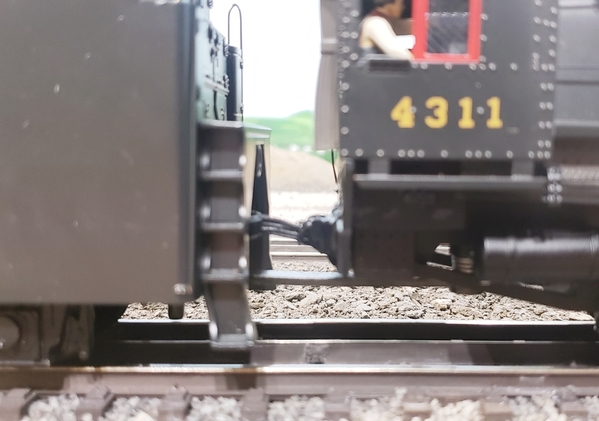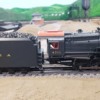I have an MTH premier decapod PS2 20-3117-1 (5 volt board) where the headlights and front marker lights will periodically turn off and turn back on while running around the loop. Reminiscent of the problem on some of these when smoke unit is on, but not exactly because flickers and then goes out completely and then comes back on.
This is an engine that I was having tether connection problems with and have glued the connector into the back of the engine socket. I don't think the present problem is the tether because previously when I would move the tether by hand it would cause problems but that is no longer the case. In other words there is no effect when I wiggle and move the tether manually.
I opened the engine and it seemed as though the plug for the lights up at the front top of the boiler was loose or disconnected. I say seemed because the boiler top came off too quickly and that could have caused the plug to come loose, idk.
I reconnected it well and the engine performed fine for a while, no problems at all. But the same problem is happening again.
My next step I am planning is to track down the wires from that plug up into the front top of the boiler to see if there is a short somewhere, and to of course again check that plug. However, I doubt that the plug is loose again.
I wanted to ask here if this blinking headlight and marker lights is symptomatic of some other known kind of problem like with a capacitor, dying board generally, or something like.
Other info:
1. There is a new rechargeable battery in it, and I took it out and confirmed it is charged. EBL 6F22 280mAh (aside: it is reading at 9.98 volts, is that within spec or is it too high?)
2. Recently fixed issues seemingly due to bad tether connection were random stopping, jerky jolting stop/starts, and runaway train. These have not reoccurring since I fixed the tether.
3. Taking she'll off locomotive is now annoying because the tether passes through a hole in the shell to the socket, but is doable because the hot glue can be pulled out with mild inconvenience. The tether socket on the locomotive allows too much up and down play and the hot glue essentially thickens or fills the top of the plug to keep it pushed downward for good contact as well as fixing in place.
4. Track is clean, rollers and wheels are clean, no other locomotives showing this issue.
5. Light goes out and back on when running over a certain switch, as well as elsewhere where there are no switches.
Sorry for long explanation, but I think those who can guide me on this appreciate a lot of info.
Thank you for your expertise!












